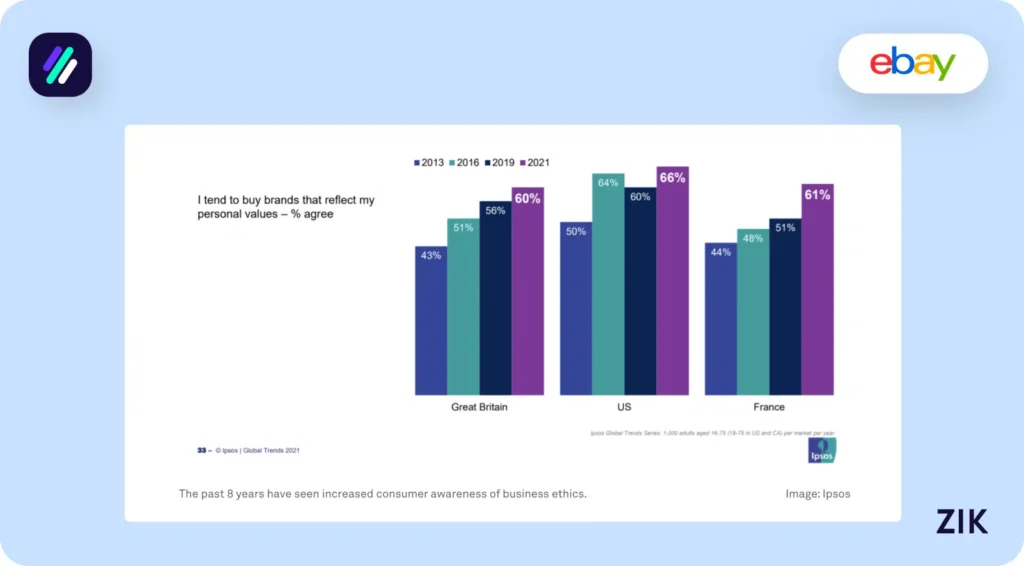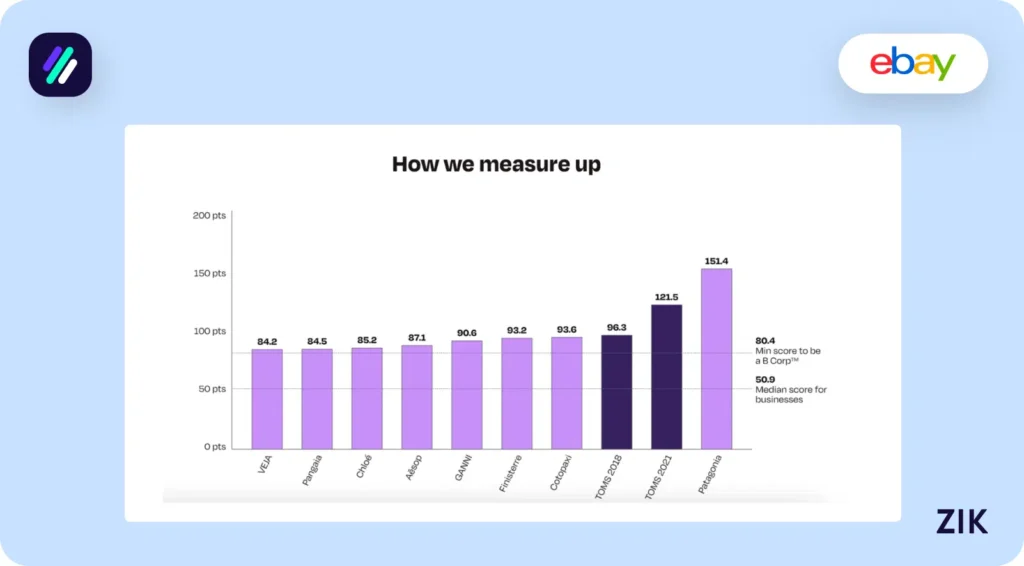Any successful eCommerce company knows that effective branding is the key to standing out in the increasingly competitive online landscape. A memorable online identity is hard to build, but worth its salt if you get it right.
Successful eCommerce branding, in fact, can increase the visibility of your products and boost sales in a way that advertising often can’t. It’s so important, in fact, that it’s the second-highest spend for most CMOs surveyed by Gartner in 2022.
Simply put, branding is beneficial in more ways than one.
So, as an online seller, how can you improve your branding to grab customers’ attention and blow competition out of the water? Our essential guide will explore the ins and outs of eCommerce branding, why it’s so crucial for your business, and the steps to create a memorable brand. Let’s dive in.
What is eCommerce branding?
Ecommerce branding is the consistent, continuous, and conscious effort to build and reinforce a brand that people recognize and trust.
Where offline branding is about attracting the eye of the customer in a traditional sense, (posters, shop front, signage and newspaper adverts, etc.) eCommerce branding is about standing out online and directing people to your eCommerce website.
When you start a business, the first things you probably think about are the name and logo. But branding is about so much more than this. It encompasses everything from the color scheme you choose to the taglines you use and quality you deliver.
Branding is the process of bringing everything together to create a cohesive image and feel and putting it where your consumers will see it. In the case of eCommerce, this could mean pop-up adverts, emails, utilizing social media or paying for promotions.

Why is eCommerce branding important?
Branding can be costly and challenging. But there are a few reasons why it’s worth the effort. Branding can help you to:
- Stand out. This can be especially useful in a competitive market like eCommerce, but it’s equally as valuable in emerging markets where awareness is generally low.
- Build trust with customers. When customer service and product quality support a successful branding campaign, your company can become synonymous with trust. This means customers will feel like their expectations are always met.
- Boost sales. Effective branding can take customers on an emotional journey that ultimately generates sales. This can be done with brand storytelling which resonates with the values, emotions, and aspirations of your target audience. You could be using real clients or highlighting a common problem that your product helps solve.
Essential steps to creating a strong eCommerce brand
As mentioned earlier, branding isn’t always straightforward. And it’s one thing to just create a brand. It’s another to build a brand that will deliver on its promise to customers and stand the test of time.
Follow these steps to help you get started in creating a strong eCommerce brand that will do just that (and maybe even more).
1. Determine your target audience
Knowing who you’re targeting will help define the essence of your brand. This means understanding who buys your product and their demographics (age, gender, location etc).
You’ll also need to determine the intent behind purchases, people’s shopping preferences, what they care about, and what motivates them to make a purchase.
Ways to determine your target audience could include:
- Creating a buyer persona
- Analyzing existing customers
- Doing a competitor analysis
- Utilizing customer surveys.
Knowing your target market helps you plan how best to communicate with them. You can tailor campaigns, personalize content, and segment your audience for more effective, direct marketing.
2. Define your purpose
Hashing together a brand because you know you should have one probably won’t result in the benefits noted above. Without purpose, you lack direction.
Without direction, you won’t know where you’re going.
Why did you start the business? This is the key question to determine the reason your business exists.
Was there a gap in the market? A problem that needed solving?
You can demonstrate why you’re different and why you stand out from the crowd.
If you don’t know the answers to these questions, you’ll have a hard time getting customers to understand what you’re all about, let alone effectively selling anything. So, it’s worth putting time and thought into defining your purpose.
Communicating a clear purpose through your brand helps new customers decide if you’re the right company for them and how your products or services will solve their pain points.
3. Have a clear vision and mission
Your brand vision is what your company is striving for. It’s a target that can be communicated across the business. All practices, brand decisions, and policies can then be geared towards the vision of your business.
Your company’s mission is the how and what you’ll do to work towards your vision. It communicates what impact you want your products to have on people and what the core ethos of your business is.
4. Communicate your core values
Research shows that 66% of customers in the US prefer brands whose purpose aligns with their own principles.

Your brand values are important as they encompass your purpose, vision, and mission. Collectively, they help create a culture that can attract customers (and even employees) who share similar values.
Through your branding, you can also share your journey.
For instance, what prompted you to start the business?
Why did you choose to use certain materials to make your products?
Why do your staff enjoy working for your company?
These are just some ideas of how you can communicate your values to connect with customers through your branding.
Keep in mind that it’s not only your customers who need to understand what your business stands for. You should communicate core values among every department, team, and individual employee.
How else will your product development team create standout items that reflect your vision? Or how will your sales and marketing team know what message to share with customers to best reflect your brand?
So, ensure you communicate with internal teams. This can be part of the onboarding process or worked into training programs.
You can also upload relevant documents like mission statements onto internal platforms like sales enablement software or content management systems so teams can refer to them whenever needed.
5. Nail your USP
In today’s society, having a genuinely unique product is quite rare. So having a USP, or Unique Selling Point, is essential to stand out in a competitive market.

For example, if you sell jeans, what makes yours better than say, Levi’s original 501s?
Is it that you’re a fair trade company or offer a plus-size range? Or perhaps you offer ‘RE-pair & RE-wear’ service or curbside pickups, which your competitors don’t?
Here’s where you make it your USP and shout it out from the rooftops.
6. Create your visual brand
Once you’ve defined your brand, it’s time to create a visual identity that reflects your target market and the vision, mission, and values we talked about earlier. This is the stage most people think about when they hear the term ‘branding’—and it’s certainly a great time to get creative.
Your visual identity should take into account your:
- Logo
- Color scheme
- Standard fonts and imagery styles
- Website or online storefront design
- Digital assets such as email footers, social media icons, and website banners
- Product packaging.
Once you’re happy with your designs and confident they reflect your business, it’s important to have a branding style guide.
Marketers, designers, and content creators (internal and external) need to be able to produce consistent styles when creating brand assets or even social media posts, to ensure your branding remains strong and identifiable across different media and channels.
7. Think catchy
Here, we’re talking about taglines, your business name, and even your domain name.
- Taglines. Some of the most memorable are simple but have become catchy because of the jingle they’re played with, the use of alliteration or puns, or because they’re just fun to say. Take Subway’s simple ‘Eat fresh’ motto. It tells the customer everything they need to know in two words.
- Business name. Naming your business is exciting, but don’t rush this stage. Make sure your brand name will stand the test of time, be memorable, and tell people about what you sell or stand for.
- Domain name. A domain name is like a shop sign directing consumers to your online store. Do a domain name search for different options that reflect your business. Remember that while it’s tempting to be playful, including your business name in the domain name makes it easier for people to find you. You can also consider your domain choice. For example you might choose .eco if you’re a sustainable company or .me if your brand is named after you.
8. Focus on product quality
There’s little point in working hard on powerful branding if your products don’t live up to the hype. You could have the best bant sales process in the world, but if your products don’t deliver, customers will soon cotton on—and they won’t come back.
That’s why product design should form part of your branding strategy. Your products should represent the best you have to offer. This will include making sure that manufacturers, suppliers, and staff are all on the same page in terms of expectations.
9. Provide excellent customer service
As with product quality, your customer service should be a strong reflection of your company. In a world of clever branding and high competition, you can’t afford to have poor customer service, especially as an eCommerce seller.
However, when it comes to branding, this goes beyond how enquiries are handled; it covers the entire customer experience.
For example, if consumers are shopping online, do they see personalized suggestions?
Is your website easy to navigate?
Do you have a reward scheme for loyal customers? How seamless is your returns policy?
Final thoughts
Branding is evidently one of the most important parts of setting up or redefining any business. It’s the bridge between business and consumer, helping you build relationships with existing customers and nurture potential ones until you can convert them.
Having a strong reason for starting the business and a clear vision can be powerful in terms of attracting like-minded customers.
However, it’s important to stay authentic to your brand. Everything you do must reinforce the message you convey, otherwise you’ll damage your loyalty and brand reputation.
Think of your brand as your core. It should be at the center of everything you do and offer.
Happy branding!













